A hero who was forgotten because his parents gave him a Sikh name
SARDAR DYAL SINGH MAJITHIA
By Amin Mughal امین مغل
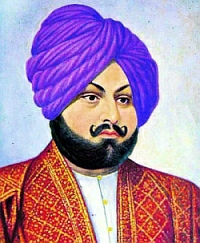
Dyal Singh Majithia. Lahore. Photo by Reza Rumi. 2007
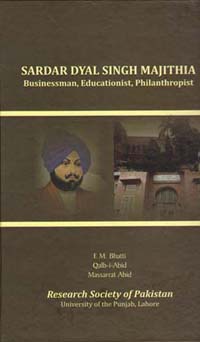 Sardar Dyal Singh Majithia: Businessman, educationalist & philanthropist by F M Bhatti, Qalb-i-Abid and Massarrat Abid. Reserach Society of Pakistan. pu_history@yahoo.com. ISSBN: 978-969-425-103-5.
Sardar Dyal Singh Majithia: Businessman, educationalist & philanthropist by F M Bhatti, Qalb-i-Abid and Massarrat Abid. Reserach Society of Pakistan. pu_history@yahoo.com. ISSBN: 978-969-425-103-5.
The book was launched at an austere but lively meeting organized by Centre for Ethnic Minority Studies (CEMS), School of Oriental Sudies, University of London, in Brunei Gallery, Tuesday 8 May 2011. It was presided overby Professor Werner Menski, Chair of CEMS. Speakers: Eleanor Newbigin, SOAS; and Dr F M Bhatti.T
It is hard to miss Dyal Singh library and the adjoining Dyal Singh college if you happen to be a Lahorite or are a visitor to the part of Lahore the residents of the posh colonies besieging it call Old City. But Very few Punjabis know much about the man who founded what the Muslims call Sadaqa i Jaaria but seldom practise the concept of never-ceasing charity.
It needs no serious sociological research to realize that the ignorance of the Punjabi masses in Pakistan is mainly due to the religious-communal divide deepened by the British with the enthusiastic involvement of the Indians of all religious persuasions. The post-1947 events have only exacerbated the situation in Pakistan apparently beyond repair. As a consequence, knowledge has thoroughly been theocratized, hence falsified.
If books could swim, this book is an attempt to swim against the tide.
The son of a courtier to Maharaja Ranjit Singh, Dyal Singh develeoped, in the words of Jagdish S Gundara, into “an Enlightenment figure”, and “a Medici figure who used his wealth to branch out into other fields”.
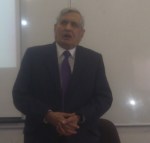 A disciple of the founder of modern India, Raja Rammohan Roy, he was a contemporary and ally of Sir Syed Ahmed Khan. In his own time, he joined the battle that had been raging among the supporters of traditional education (centred on Arabic and Sanskrit) and modern education of the Western style since even before Raja Rammohan Roy. He fought successfully the towering Orientalist Dr Leitner, whose contributions to the cause of knowledge, cannot, however, be ignored or slighted. Dyal Singh could rightly be regarded as one of the pioneers of modern education in the Punjab and, by extension, in the post-1971 Pakistan.
A disciple of the founder of modern India, Raja Rammohan Roy, he was a contemporary and ally of Sir Syed Ahmed Khan. In his own time, he joined the battle that had been raging among the supporters of traditional education (centred on Arabic and Sanskrit) and modern education of the Western style since even before Raja Rammohan Roy. He fought successfully the towering Orientalist Dr Leitner, whose contributions to the cause of knowledge, cannot, however, be ignored or slighted. Dyal Singh could rightly be regarded as one of the pioneers of modern education in the Punjab and, by extension, in the post-1971 Pakistan.
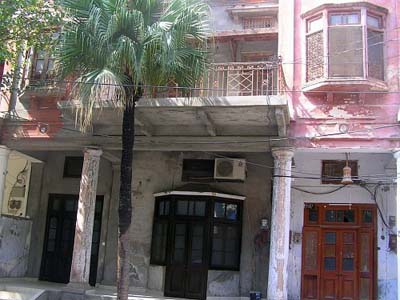
Dyal Singh Mansions. 2007. Lahore. Photo by Reza Rumi
The book provides extensive information on the Punjab before and after the annexation and the state of education, education policies and the initiatives taken under those poilicies during the East India Company period and later after its capture of the Punjab. It also provides a peep into Dyal Singh’s early life and his business, his passionate but informed involvement in educational reform activities
Perfectionists are great cynics. They may cavil at what they might perceive as the lack of rigour in scholarship and editing. They may, for instance, point out that the authors were so carried away by the narration of Dyal Singh’s educational crusade that they forgot to take up the thread of his personal life from where they had left it in an earlier chapter, so that it might be hard to know when, where and how he died. They might point to the absence of an index in the book in an era of modern digital technology. But as we know, perfectionists can never be pleased.
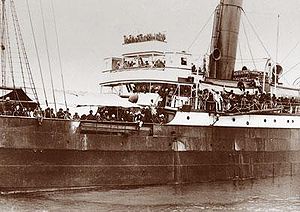
The primary and major contribution to the book, it may not be hazardous to presume, is from Dr Bhatti. It is his third in a series. The first published book was about another great (naturalized) Punjabi, Sir Ganga Ram, followed by a study of the emigration of the Punjabis, mainly the Sikhs, to Canada, with the Komagata Maru, the ship that plated a crucial role in our freedom struggle, as its focal point.
(http://www.bookclubbuddy.com/2011/chanting-denied-shores-by-tariq-malik) The series evidences Dr Bhatti’s interest in a humanist perspective on Punjab’s history.